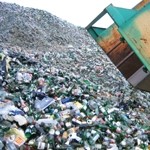Glass survival ‘could depend on energy efficiency’

Chief executive David Dalton expressed "very real fears" about the longer-term viability of the industry in the face of rising energy costs. "It's a matter of what can be passed on," he said. "Glass is suffering in comparison with other materials. It's not losing volume but, in a growing packaging market, it's losing share."
Globally, the largest glass manufacturers are putting substantial research into energy efficiency, both for cost and sustainability. Glass packaging maker O-I, for instance, has set itself 10-year targets to 2017 to reduce energy use by 50%, carbon emissions by 65% and to increase recycled content by 60%.
"We're looking at existing technology, which is economically and technically proven, and more blue-sky technologies," said O-I's environment, energy and risk manager Tim Neal.
The firm's new £9M gas-fired green glass furnace at its Alloa plant in Scotland is being built with these targets in mind. Furnaces typically account for around 80% of energy consumed within the factory gates, said Neal.
Regarding longer-term solutions, he said: "We're very focused on exploring all technical avenues for melting glass, predominantly at our Ohio research campus in the US."
Though not talking in terms of "survival", Neal agreed with British Glass that there were "challenging times ahead".
Dalton suggested that future, more localised production could follow Italy's example, where a similar volume of container glass is manufactured as in the UK, but from "five times as many factories".
But Neal said that transport in itself was unlikely to determine the size, number and location of plants, since for both raw materials and finished containers it accounted for around 6% of overall carbon impact.
Greater recyclate use supports sustainability targets but also helps reduce energy use.













